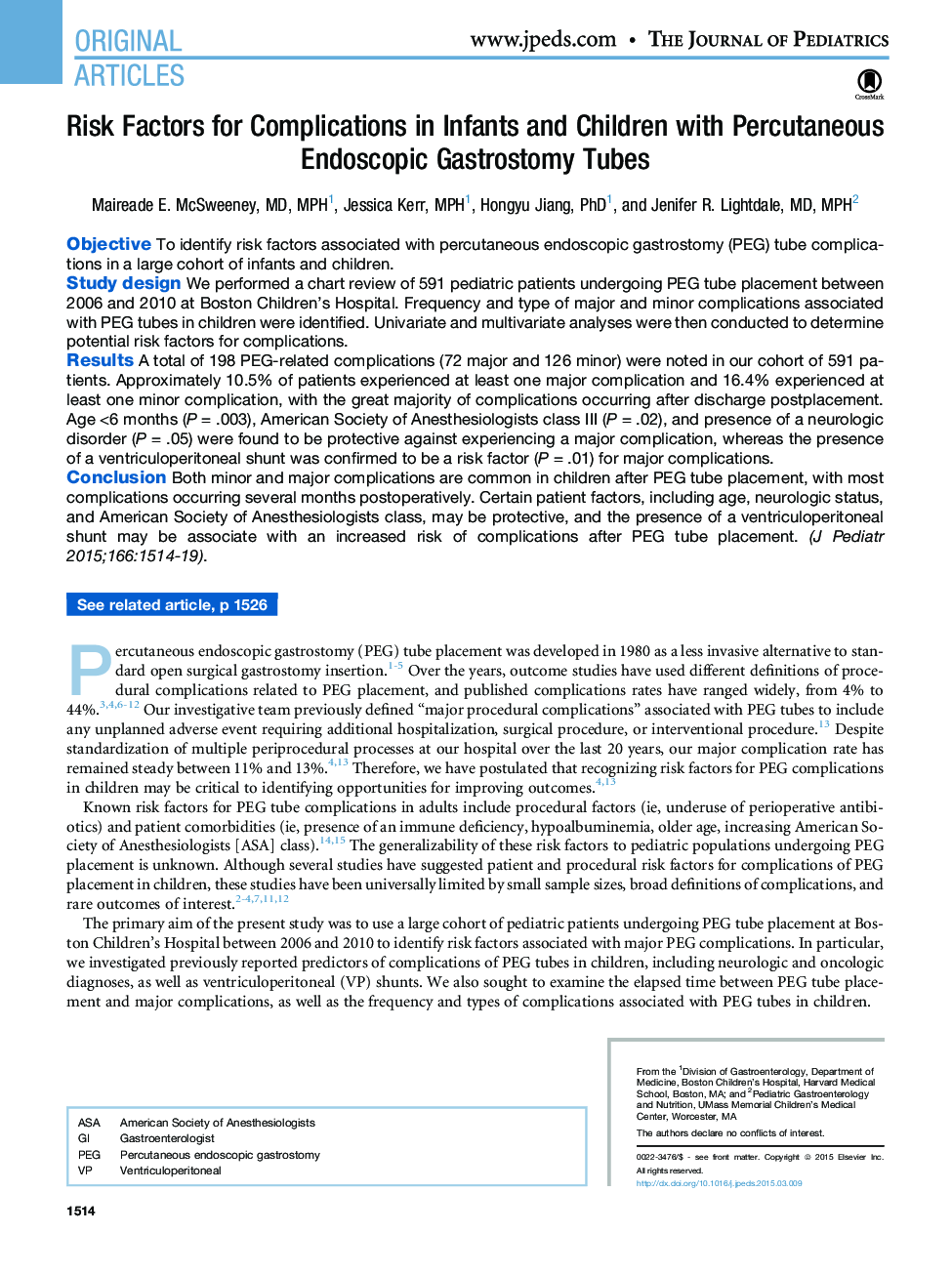| Article ID | Journal | Published Year | Pages | File Type |
|---|---|---|---|---|
| 6220842 | The Journal of Pediatrics | 2015 | 7 Pages |
ObjectiveTo identify risk factors associated with percutaneous endoscopic gastrostomy (PEG) tube complications in a large cohort of infants and children.Study designWe performed a chart review of 591 pediatric patients undergoing PEG tube placement between 2006 and 2010 at Boston Children's Hospital. Frequency and type of major and minor complications associated with PEG tubes in children were identified. Univariate and multivariate analyses were then conducted to determine potential risk factors for complications.ResultsA total of 198 PEG-related complications (72 major and 126 minor) were noted in our cohort of 591 patients. Approximately 10.5% of patients experienced at least one major complication and 16.4% experienced at least one minor complication, with the great majority of complications occurring after discharge postplacement. Age <6Â months (PÂ =Â .003), American Society of Anesthesiologists class III (PÂ =Â .02), and presence of a neurologic disorder (PÂ =Â .05) were found to be protective against experiencing a major complication, whereas the presence of a ventriculoperitoneal shunt was confirmed to be a risk factor (PÂ =Â .01) for major complications.ConclusionBoth minor and major complications are common in children after PEG tube placement, with most complications occurring several months postoperatively. Certain patient factors, including age, neurologic status, and American Society of Anesthesiologists class, may be protective, and the presence of a ventriculoperitoneal shunt may be associate with an increased risk of complications after PEG tube placement.
